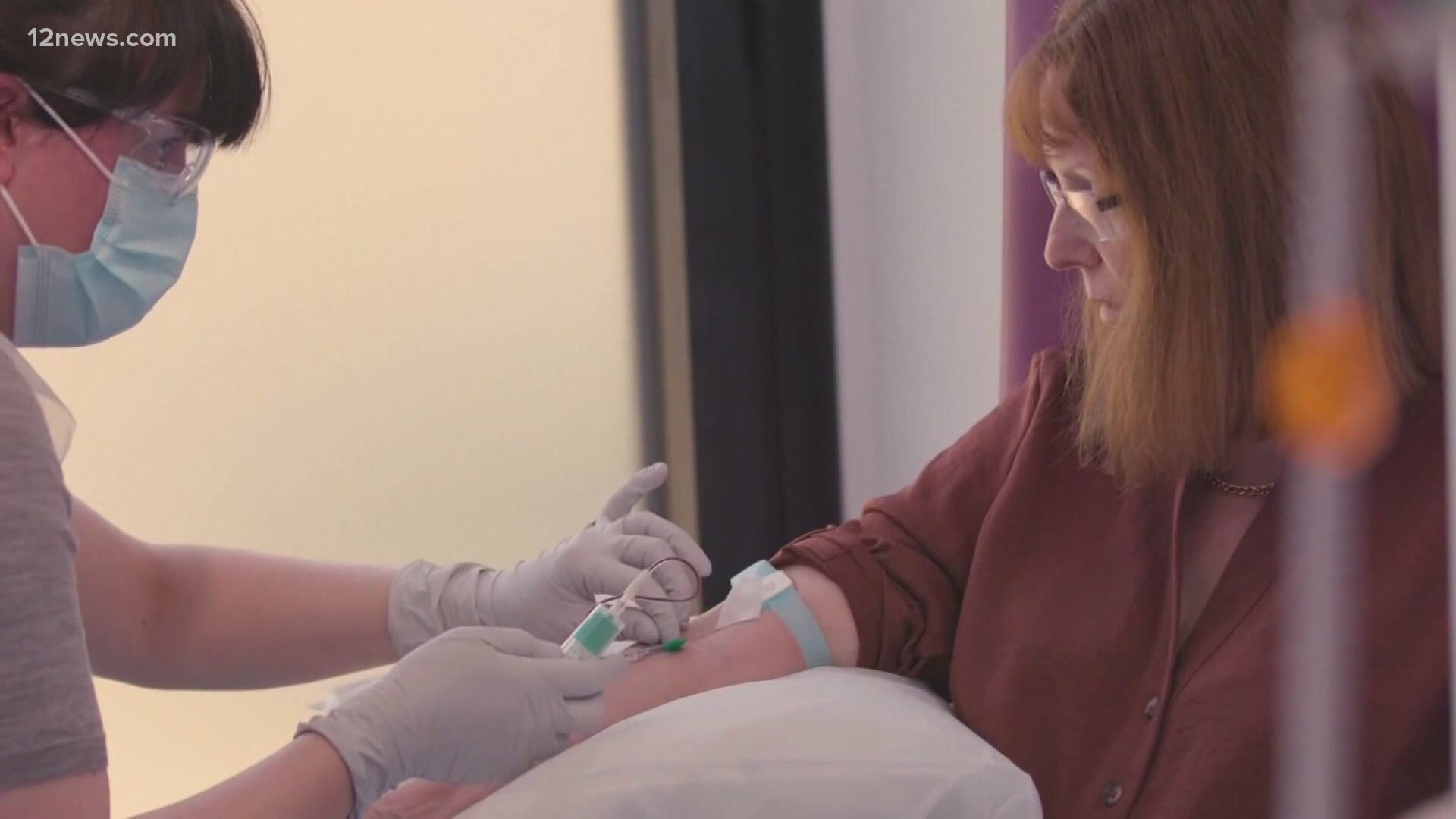PHOENIX — Hope is growing in the battle against COVID-19 after Pfizer announced new data from their vaccine trial on Monday, which said their vaccine could be 90% effective.
“If this is truly 90%, this is way better than what is expected, really encouraging news,” Dr Jun Wang, an associate professor in the Department of Pharmacology and Toxicology at the University of Arizona College of Pharmacy, said.
The vaccine has been more effective than expected, with many vaccines, Wang said, going around 50-60% success rate.
So far COVID-19 has killed more than 6,100 people and infected more than 250,000 in Arizona alone.
“We should be excited, but there is way more work to do," Wang said.
The trial for the vaccine still needs to be completed. The No. 1 priority is making sure the vaccine is safe, because even a rare side effect could hurt thousands.
“Ninty percent effective which is good, but safety always comes first,” Wang said.
Even on an accelerated schedule, it will take months to likely get approval by the FDA, then it will take time to distribute.
"It’s still a months-long process, this is not 30 days in and we are all vaccinated. That’s not how this will proceed,” James Hodge, director of the Center for Public Health Law and Policy at ASU's law school, said. "Logistically pulling that off across a nation this size is not easy.”
State health officials have drawn up a blueprint for how health workers will implement COVID-19 vaccines to Arizonans after it is approved by the FDA.
The plan represents a colossal effort to inoculate more than seven million Arizonans in several phases.
The 55-page draft report is subject to revisions. It details how vaccine manufacturers would distribute vaccines to three locations in Arizona: County health departments, tribal facilities and a third group of “pre-designated locations” that include pharmacies.
Those entities would then administer vaccines to “priority populations” first, based on the availability of the vaccine.
For example, health care personnel like family doctors, emergency room workers, and pharmacists are currently included in the top of the priority population list, categorized in “Phase 1a.”
“Phase 1b” includes teachers and school staff, child care providers, seniors, people with underlying medical conditions, nursing home residents and retail food industry workers.
“Phase 2” includes inmates, the homeless, college students and people from racial and ethnic minority groups, which are more vulnerable to serious illness and death.
“Our state health officials may have gotten it right as far as what should be the appropriate allocation of the initially limited doses,” said James Hodge.
Hodge reviewed the draft report and said one area that may be subject to change is the placement of retail food industry workers in the first phase. It is not recommended by the National Academy of Medicine.
“All I can tell you is at the national level, in regards to what we ethically thought regarding the proper allocation, essential workers and food industries did not rise to the level of tier one in that respect,” Hodge said.
Compared to the H1N1 vaccine, administering the COVID-19 vaccine will require considerably greater logistics, tracking, and manpower, Hodge said. That’s because it will likely have to be administered in two doses at least three weeks apart in order to be effective.
“That’s why CDC is demanding Arizona and our state department of health really lay out how they will monitor that second dose, if necessary. That’s a big factor,” Hodge said.
According to the draft plan, the operation is being carried out by the Arizona Immunization Program Office, which consists of 30 full-time staff responsible for implementing all aspects of vaccines for children and adults.
Statewide, the Vaccine Task Force will provide support and guidance as well. It is made up of two dozen organizations including the Arizona National Guard, the Arizona Hospital Association and Arizona State University.

